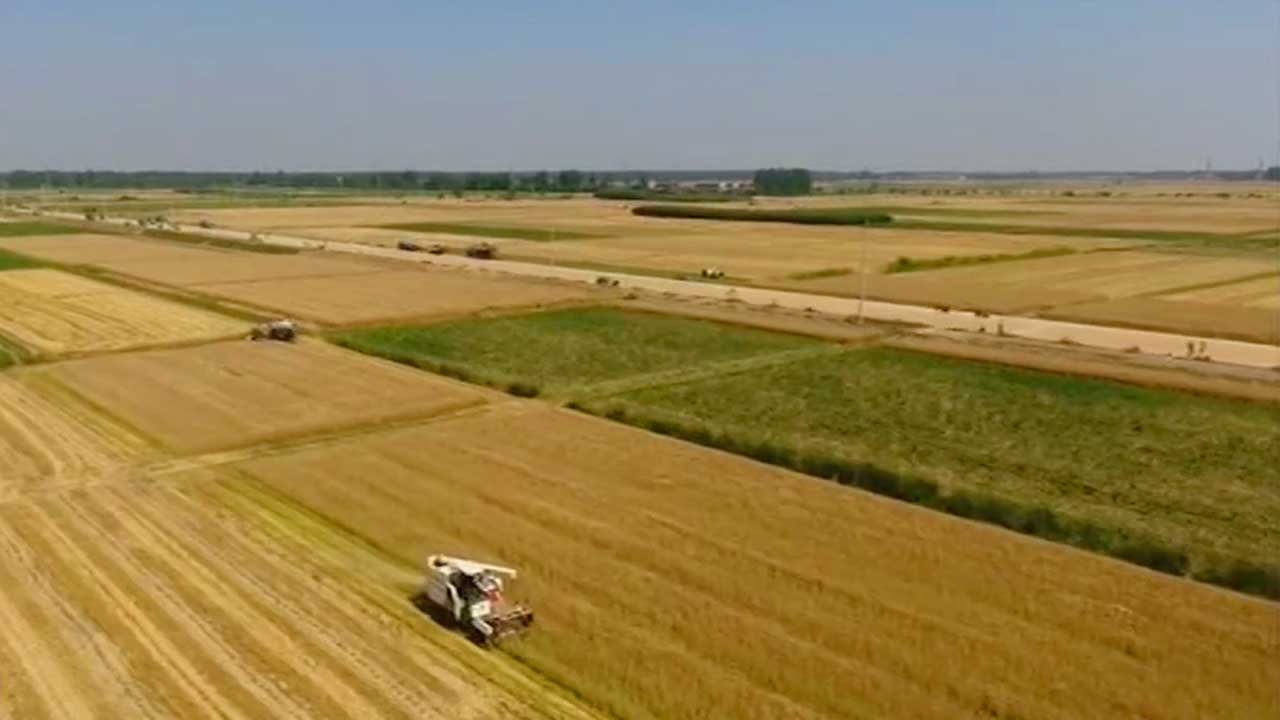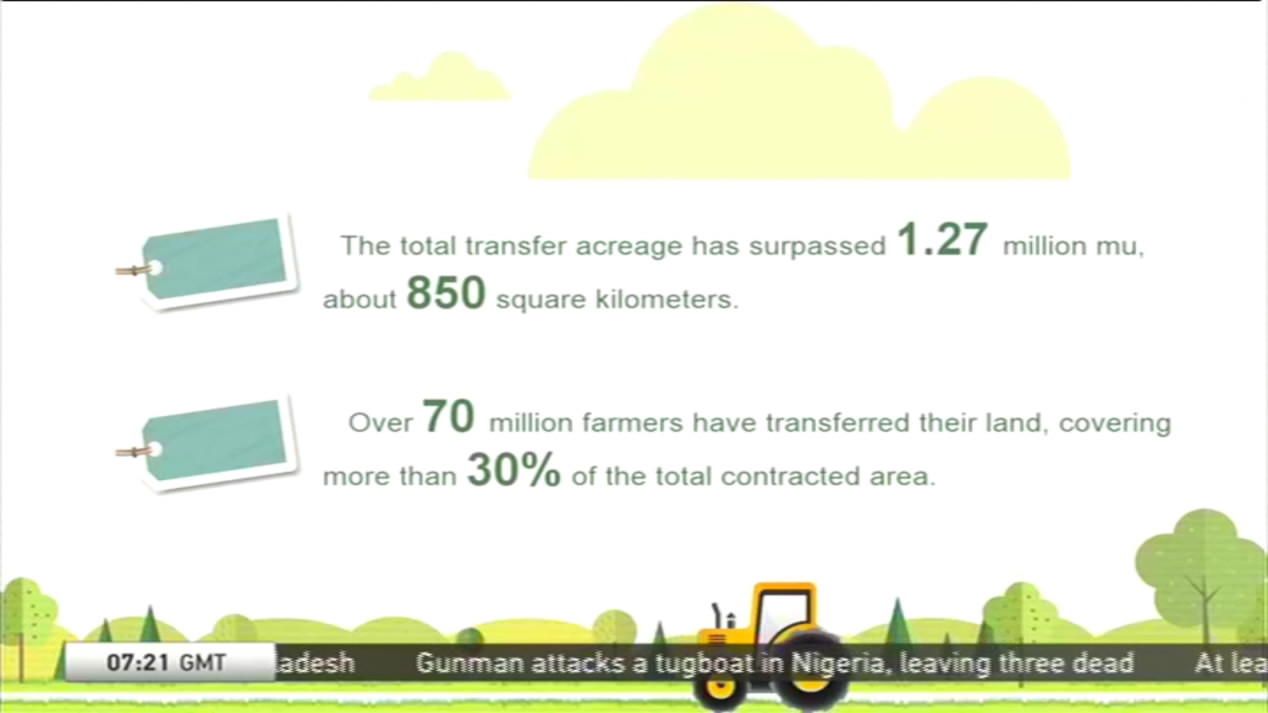
China
21:13, 24-Sep-2017
Rural land transfer policy energizes China’s agricultural reform
By CGTN's Cao Bing

Land is the most valuable resource for farmers. And in modern China, as an increasing number of farmers choose to work in urban areas, "who will farm" and "how to farm" have long been two difficult issues to solve. However, the government’s approval of the rural land transfer policy four years ago has helped change the situation.
The rural land transfer policy works in this way: When a farmer plans to work in urban areas, and doesn't want his land to go unused, he can put his land management rights on the exchange platform and transfer it to someone who needs it. The farmer also gets a certain amount of income from it.
But the policy wasn't implemented nationwide until July 2013, when Chinese President Xi Jinping paid a visit to the Wuhan Comprehensive Rural Equity Exchange. On his visit, President Xi debriefed and affirmed the Exchange’s reports on the initial research into transferring rural land, and asked them to further discuss land management rights.

CGTN Picture
CGTN Picture
Three months after the visit, the Third Plenary Session of the 18th Central Committee of the Communist Party of China's Central Commission opened, and it clearly acknowledged farmers' rights over land management. Later, the Central Government officially released files, separating the ownership, contract, and management rights of farmland.
With policy clarification, mortgage and financing of rural land problems have been accordingly solved.
Over the past 4 years, the transaction scale of the Wuhan Rural Area Exchange has doubled, with a total transfer acreage surpassing 1.27 million mu, an equivalent of 850 square kilometers.
Also, over 70 million farmers in China have transferred their land, covering more than 30% of the total contracted area. The policy has optimized land allocation, improved land scale management, and given an institutional guarantee and new energy for agricultural reform.

SITEMAP
Copyright © 2018 CGTN. Beijing ICP prepared NO.16065310-3
Copyright © 2018 CGTN. Beijing ICP prepared NO.16065310-3